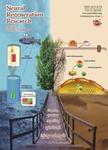Acquired sensorineural hearing loss,oxidative stress,and microRNAs
作者机构:Division of Otolaryngology-Head & Neck SurgeryDepartment of SurgeryFaculty of MedicineThe University of British Columbia Division of Otolaryngology-Head & Neck SurgeryGordon & Leslie Diamond Health Care CentreVancouver General Hospital Faculty of Medicine-The University of British Columbia
出 版 物:《Neural Regeneration Research》 (中国神经再生研究(英文))
年 卷 期:2025年第09期
页 面:2513-2519页
核心收录:
学科分类:1002[医学-临床医学] 100213[医学-耳鼻咽喉科学] 10[医学]
摘 要:Hearing loss is the third leading cause of human ***-related hearing loss,one type of acquired sensorineural hearing loss,is largely responsible for this escalating global health ***-induced,ototoxic,and idiopathic sudden sensorineural are other less common types of acquired hearing *** etiology of these conditions is complex and multi-fa ctorial involving an interplay of genetic and environmental *** stress has recently been proposed as a likely linking cause in most types of acquired sensorineural hearing *** non-coding RNA sequences known as microRNAs(miRNAs) have increasingly been shown to play a role in cellular hypoxia and oxidative stress responses including promoting an apoptotic *** hair cell death is a central histopathological finding in sensorineural hearing *** these cells do not regenerate in humans,it underlies the irreversibility of human age-related hearing *** EMBASE,Ovid MEDLINE,Web of Science Core Collection,and *** databases over the period August 1,2018 to July 31,2023 were searched with hearing loss, hypoxamiRs, hypoxia, microRNAs, ischemia, and oxidative stress text words for English language primary study publications or registered clinical *** red clinical trials known to the senior author we re also assessed.A total of 222studies were thus *** excluding duplicates,editorials,retra ctions,secondary research studies,and non-English language articles,39 primary studies and clinical trials underwent full-text *** resulted in 11 animal,in vitro,and/or human subject journal articles and 8 registered clinical trial database entries which form the basis of this narrative *** miR-34a and miR-29b levels increase with age in *** miRNAs were demonstrated in human neuroblastoma and murine cochlear cell lines to target Sirtuin 1/peroxisome proliferato r-activated receptor gamma coactivator-1-alpha(SIRT1/P GC



